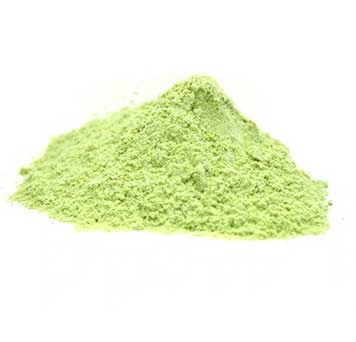
Mrz . 07, 2025 06:16
Back to list
Sodium Benzoate
Sodium benzoate, a compound commonly used as a preservative, has an intriguing origin story that reveals a blend of scientific innovation and practical application. Its roots can be traced back to the late 19th century when chemists were searching for solutions to extend the shelf life of food and medicinal products. Derived from benzoic acid, a substance naturally found in certain fruits like cranberries, plums, and apples, sodium benzoate represents a pivotal advancement in food science.
The evolution and commercial success of sodium benzoate can be seen as a testament to industrial innovation. As sustainability becomes an increasing concern, manufacturers are exploring more efficient production methods and potential natural alternatives that align with consumer demands for cleaner labels. That said, sodium benzoate's cost-effectiveness and proven track record in safely extending product shelf-life continue to make it an indispensable component in modern manufacturing. A consideration for businesses utilizing sodium benzoate is its synergy with other preservatives. Often, it’s used in combination with other compounds like potassium sorbate to enhance preservation efficacy without compromising on safety or quality. This balance between efficiency and safety exemplifies the careful considerations that go into product formulation. For consumers, understanding sodium benzoate's origin and purpose provides reassurance about its presence in everyday products. Dispelling myths and educating the public on its safety and regulatory status helps build trust in its use. Moreover, for individuals with specific dietary concerns or constraints, knowing the scientific foundation and extensive research backing sodium benzoate aids in making informed decisions about consumption and product use. In conclusion, sodium benzoate’s journey from a naturally occurring acid to a cornerstone of industrial preservation solutions reflects a fusion of historical curiosity and modern-day technological prowess. Its enduring relevance in a myriad of applications underscores not only its functionality but also aligns with the precision and safety standards demanded by today’s consumers. Emphasizing its origin, safety credentials, and versatile use cases not only strengthens its authority in the market but also fortifies consumer trust and acceptance, ensuring its continuous utility in an ever-evolving landscape of product preservation.


The evolution and commercial success of sodium benzoate can be seen as a testament to industrial innovation. As sustainability becomes an increasing concern, manufacturers are exploring more efficient production methods and potential natural alternatives that align with consumer demands for cleaner labels. That said, sodium benzoate's cost-effectiveness and proven track record in safely extending product shelf-life continue to make it an indispensable component in modern manufacturing. A consideration for businesses utilizing sodium benzoate is its synergy with other preservatives. Often, it’s used in combination with other compounds like potassium sorbate to enhance preservation efficacy without compromising on safety or quality. This balance between efficiency and safety exemplifies the careful considerations that go into product formulation. For consumers, understanding sodium benzoate's origin and purpose provides reassurance about its presence in everyday products. Dispelling myths and educating the public on its safety and regulatory status helps build trust in its use. Moreover, for individuals with specific dietary concerns or constraints, knowing the scientific foundation and extensive research backing sodium benzoate aids in making informed decisions about consumption and product use. In conclusion, sodium benzoate’s journey from a naturally occurring acid to a cornerstone of industrial preservation solutions reflects a fusion of historical curiosity and modern-day technological prowess. Its enduring relevance in a myriad of applications underscores not only its functionality but also aligns with the precision and safety standards demanded by today’s consumers. Emphasizing its origin, safety credentials, and versatile use cases not only strengthens its authority in the market but also fortifies consumer trust and acceptance, ensuring its continuous utility in an ever-evolving landscape of product preservation.
Next:
Latest news
-
Sodium Dichloroisocyanurate Safety Handling ProtocolsNewsJul.29,2025
-
Mining Chemicals for Copper Extraction Processes GuideNewsJul.29,2025
-
Fertilizer for Sale Shipping and Storage TipsNewsJul.29,2025
-
Dimethyl Disulfide as Sulfurizing AgentNewsJul.29,2025
-
Benzotriazole Safety Data Handling and Storage GuidelinesNewsJul.29,2025
-
Ammonium Bicarbonate Safety Handling Storage GuidelinesNewsJul.29,2025
-
The Transformative Role Of Trichloroisocyanuric Acid in Water TreatmentNewsJul.23,2025
HOT PRODUCTS
Hebei Tenger Chemical Technology Co., Ltd. focuses on the chemical industry and is committed to the export service of chemical raw materials.
-

view more DiethanolisopropanolamineIn the ever-growing field of chemical solutions, diethanolisopropanolamine (DEIPA) stands out as a versatile and important compound. Due to its unique chemical structure and properties, DEIPA is of interest to various industries including construction, personal care, and agriculture. -

view more TriisopropanolamineTriisopropanolamine (TIPA) alkanol amine substance, is a kind of alcohol amine compound with amino and alcohol hydroxyl, and because of its molecules contains both amino and hydroxyl. -

view more Tetramethyl Thiuram DisulfideTetramethyl thiuram disulfide, also known as TMTD, is a white to light-yellow powder with a distinct sulfur-like odor. It is soluble in organic solvents such as benzene, acetone, and ethyl acetate, making it highly versatile for use in different formulations. TMTD is known for its excellent vulcanization acceleration properties, which makes it a key ingredient in the production of rubber products. Additionally, it acts as an effective fungicide and bactericide, making it valuable in agricultural applications. Its high purity and stability ensure consistent performance, making it a preferred choice for manufacturers across various industries.











